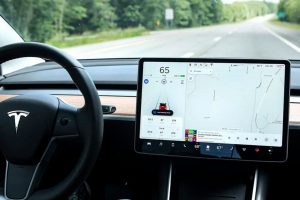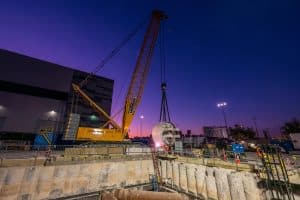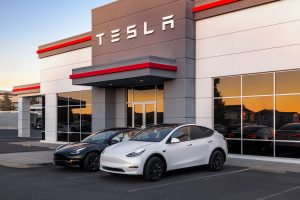- 🚗 Tesla’s next-generation vehicle will start production in the second half of 2025.
- 💰 The new vehicle aims to enter a new pricing point for wider customer accessibility.
- 🌐 The next-gen vehicle will be a completely new model with new production lines.
- 🤖 While details on the vehicle, codenamed “Redwood,” are limited, it seems focused on affordability rather than full autonomy.
- 📉 Tesla expects a notable hit on volume growth rate in the short term due to the transition to the next-generation vehicle.
- 🏭 The production of the next-gen vehicle will begin at Gigafactory Texas, revolutionizing manufacturing processes.
- 🛌 Elon Musk suggests employees may need to “literally be sleeping” on production lines during the challenging manufacturing phase.
In the ever-evolving landscape of electric vehicles, Tesla continues to lead the way with groundbreaking announcements. The recent revelation that Tesla’s next-generation vehicle is set to commence production in the second half of 2025 has sent waves of anticipation and excitement through the automotive community. In this blog post, we’ll delve into the key details and implications surrounding Tesla’s upcoming venture.
Aiming for New Horizons: Affordable Innovation
Tesla’s next-generation vehicle is not just another addition to the lineup; it represents a strategic move towards capturing a broader market. The company aims to enter a new pricing point, making electric vehicles more accessible to a wider range of customers. This shift aligns with Tesla’s commitment to sustainable transportation and marks a significant step in the widespread adoption of electric cars.
Unveiling the Next Gen: What to Expect
As Tesla embarks on this journey, the promise of a completely new model with revamped production lines sparks curiosity. Codenamed “Redwood,” the details on the vehicle remain elusive. However, it appears that the emphasis is on affordability rather than pushing the boundaries of full autonomy. This decision reflects Tesla’s understanding of the market and the importance of catering to varying consumer needs.
Short-Term Setback, Long-Term Gain
Tesla acknowledges the short-term challenges that come with transitioning to the next-generation vehicle. The company anticipates a notable hit on volume growth rate in the immediate future. This is a strategic sacrifice as Tesla positions itself between two major growth waves. The first wave saw the global expansion of the Model 3/Y platform, and the upcoming one is expected with the global expansion of the next-generation vehicle platform.
Gigafactory Texas: The Epicenter of Change
The production of the next-gen vehicle will kick off at Gigafactory Texas, marking a pivotal moment in Tesla’s manufacturing capabilities. Elon Musk envisions a revolution in how vehicles are manufactured, hinting at advancements that could redefine industry standards. This move not only underscores Tesla’s commitment to innovation but also positions Texas as a key player in the electric vehicle revolution.
Musk’s Challenge: Sleeping on the Job
Elon Musk, known for his hands-on approach, anticipates a challenging road ahead for the production of the next-generation vehicle. Drawing parallels to the Model 3 ramp, Musk suggests that employees may need to “literally be sleeping” on production lines during the intense manufacturing phase. This dedication to the process highlights the high stakes and ambitious goals Tesla has set for itself.
In conclusion, Tesla’s next-generation vehicle marks a significant chapter in the company’s journey and the evolution of electric vehicles as a whole. As we eagerly await further details, one thing is clear – Tesla’s commitment to affordability, innovation, and pushing boundaries will continue to shape the future of sustainable transportation.





